#j. m. dematteis
Explore tagged Tumblr posts
Text
So I’ve had some Thoughts about From the DC Vault: Death in the Family: Robin Lives!
Warning: Spoilers
My mistake with From the DC Vault: Death in the Family: Robin Lives! was thinking that the story would actually be about Robin. That was on me. I should have known better, but I let my excitement of finally getting more Jason Todd, Robin content get away from me. I set up poor expectations, and it’s not the comic’s fault for not meeting those expectations.
Everything else is, though.
I know I’m biased, and I am probably writing this too soon after having finished Robin Lives to really give myself time to think critically about the story. But, I also feel rather offended by the end and feel the need to strike while the iron is hot. Recently, I talked about fans and writers needing to have respect for each other, as they can’t exist without each other. I also mentioned having a respect for the history of the comic. On that, I don’t get the feeling that J. M. DeMatteis has much respect for the history that was Jason’s Robin run. Granted, this isn’t mainline canon. It is more of a ‘What if?’ So DeMatteis wasn’t “entrusted” the same way but, there was still a line of basic respect that feels very lacking. Now, DeMatteis has been writing since the 80s and has written a lot for both DC and Marvel so he is a part of comic history, but this doesn’t really translate into respect for characters. Or for fans.
Both Jason and Dick’s character have a rough time in this 4 issue series. While the series called “Robin Lives” mostly focuses on Bruce and his regret, by doing that it makes Jason and Dick more like props for Bruce’s guilt than actually characters with their own agency. Bruce outright denies Dick’s choice in becoming a Robin and even later Nightwing. In this guilt, Bruce totally takes away the fact that even as a child, Dick did choose this, and he chose it again when he became Nightwing. So Bruce’s guilt serves no one here. And this problem gets worst with the Robin Lives ending. Dick becoming Batman, is an incredibly weak ending to start. Because most of Dick’s history is him growing out of Robin and then trying to break out of Bruce’s shadow. Yes, Battle for the Cowl happens, but it’s more complex than Dick just becoming Batman. And it’s easy to see how pointless all of Bruce’s guilt was when he decided to leave his role as Batman, only for Dick to take it up again. It really feels like Dick is only a prop for Bruce’s journey. Dick is here for Bruce to feel guilty about, but then to also relieve him of the duty that also makes him feel guilty.
And it is so much worse with Jason. This does sort of come back to me setting up poor expectations and the fact I thought this would be about Jason’s recover, but it was glossed over. We simply jump to Jason now being okay, which is a choice, if on the unbelievable side. What is worse, though, is how Bruce and the comic, makes Jason’s trauma about Bruce. Because yes, to an extent Bruce holds fault for the events leading up to Death in the Family. But he mainly holds fault in the form of negligence. He didn’t properly check out Sheila Haywood's background before for deciding she was a safe person to leave his son with. I am boiling down the issue of character interaction between Bruce and Jason (and outside influence that puts Jason’s last issues into context), but my point still stands that Bruce and Jason still made choices. For Jason’s part, he chose to trust Shelia to try, and save her. And in reality, Joker and Shelia hold the blame for Jason’s trauma. The fact Shelia was only briefly seen in a hallucination and “saving” Jason, again feels like DeMatteis has a lacking appreciation for the history of Jason’s Robin, and it’s context. Yes, Shelia saving Jason would be something Jason would want, but the event after this takes away everything that would make Jason still want Shelia’s affection in some way. With the ending and Jason becoming the Joker to Dick’s Batman, shows this. It ultimately feels like both Dick and Jason were used as stage props to re-establish some kind of status quo for a series that was only planned for only four issue. The run very well could have ended with the Joker’s death and everyone going to live happy lives but for some reason no.
Now, one could see that as DeMatteis having a respect for Batman’s history as a whole and a path for a continuation. I would argue, though, that it shouldn’t come at the cost of other character’s agency. The leap in Jason’s “madness” is awkward, and when I say leap I mean a massive leap. This goes back to my problem with the story not focusing on Jason. We spend so much time in Bruce’s grief that when it is about Jason, everything goes sideways and ends up with being a “What the hell did that happen?” Especially since in the context of the story, Jason should have gotten a lot more support from Bruce, now retired, from Dick, now living back in Gotham, and from Dr. Sarawarti Dev, a psychologist. Having Jason still become the Joker after all this, not only feels like all of those people continued to fail him (especially as Bruce and Dr. Sara get married, which was a strange addition), but that he never really had any choice. The story didn’t take the time to show us this, to show us how or where Jason became the Joker. He even denied becoming like the Joke in early issue 4. A point might be made that killing the Joker made Jason the new Joker, but a counterpoint Why? Jason already had the choice and decided? Why did he go back on that? Jason was Robin, Robin has the role of bringing hope, and being more compassionate, countering the fear Batman brings. We see Jason’s compassion before he died (or was injured in this case), when he still tried to save Shelia after she betrayed him. We see it in this comic with him still wanting her affection in his hallucination. So where did that compassion and care go?
The answer? It didn’t go anywhere. It was forgotten for the sake of a convoluted twist to make a reader gasp. Robin Lives spends its whole four issue run taking away the choice and agency of Robin. Robin does not live here. He becomes a puppet of the plot not to move outside of its designated story, he only can become Batman or the Joker. But never his own being. For anyone who’s ever enjoyed Robin, be it Dick Grayson, Jason Todd, Tim Drake, Stephanie Brown, Damian Wayne or any other Robin, past or future, Robin Lives is an insult.
#dc comics#From the DC Vault: Death in the Family: Robin Lives!#robin lives#J. M. DeMatteis#jason todd#Again is put through the wringer for other character's benefit#dick grayson#bruce wayne#I'm gonna go take a nap now man#Fun fact: I was pretty much done with something else but then this happened and i swaped gears
59 notes
·
View notes
Text
So you want to know more about Big Barda
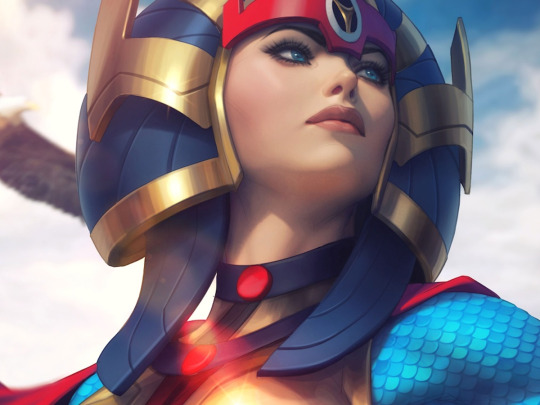
As Tumblr's resident expert on all things Barda, and as Kelly Thompson's Birds of Prey run brings far more attention to the character, I figured it was high time someone stepped in and gave the tumblr world a primer on DC's biggest and boldest heroine.
The Basics:
Introduced in Mister Miracle #4 by Jack Kirby, Big Barda was once the leader of Apokolips' premier death squad, the Female Furies. Trained from birth for a life of violence by Granny Goodness, Barda spent the first 250 years of her life as a living weapon. This all changed when she met Scott Free, a gentle Parademon-in-training with a mysterious past and a knack for escapes. Eventually, she and Scott both escaped to Earth, where they fell in love with both the Earth and each other. She's a lover, she's a fighter, she's a Pokémon card expert, but most of all, SHE BIG.
Barda's signature defining attribute is her raw strength. Her raw muscle allows her to keep up with heavy hitters like Wonder Woman. This isn't to suggest that she's a simple-minded brute, however-- Barda has centuries of military experience under her belt as leader of the Female Furies. She's mastered multiple weapons, including spears, swords, and her signature Mega-Rod.
Below are some reading recommendations for anyone interested in Big Barda:
Essential Runs:
Mister Miracle Vol. 1 #4-18 by Jack Kirby (1971-1974)
This was the run that introduced the world to Big Barda, as well as the Female Furies. If you want to know the basics of Barda, there's no better place to start. This run is collected in a trade, as well as a part in The Fourth World Omnibus Vol. 1.
(NOTE: Even though Barda doesn't appear until issue #4, I suggest you start with Issue #1. It'll help you get acquainted with the rest of the mythos.)
Justice League International #14-24 by Keith Giffen and J.M. DeMatteis (1988-1989)
Big Barda was on the JLI! She plays off the other characters as well as ever, and a lot of what's great about her in Jack Kirby's original run is still here! Definitely check this one out if you want to see her in another team setting. This has been collected in this omnibus.
(NOTE: Once again, I recommend you start from issue #1.)
Popular Runs:
Mister Miracle Vol. 4 #1-12 by Tom King and Mitch Gerads (2017-2018)
Yeah, I know.
Listen, Tom King is a writer with... idiosyncrasies to put it nicely. The characters in the periphery of his stories tend to act really out of character, and his dialogue can be clunky at times. That being said, The Scott/Barda dynamic in this book is excellent, and this book has some of the best art that the Fourth World has seen since the 80s. The series has been collected in a trade.
(NOTE: Did you know that the CIA has over 2003 files on Tom King? Look up "Tom King CIA 2003" for more info!)
Mister Miracle: The Great Escape by Varian Johnson and Daniel Isles (2022)
If you're at all interested in the idea of a Young Adult reimagining of Mister Miracle and Big Barda's origin story with an all-black cast, this book was made for you. It's a bit heavy on the YA tropes, but the Scott/Barda dynamic is really solid. It was released as a standalone graphic novel.
Birds of Prey Vol. 5 #1-??? by Kelly Thompson and Leonardo Romero (2023-)
Admit it, this is the reason you're here. The Cassandra Cain & Big Barda is so instantly iconic, I'm surprised no writer has paired them up sooner. It also helps that this book has the single best Barda look since Jack Kirby's original run. Plus, she gets to throw down with Wonder Woman! What's not to love? This run is still ongoing, but the first 6 issues should be getting a trade pretty soon.
(NOTE: I started writing this before BOP #8 dropped, I had no idea about that thing that happens in the newest issue.)
Stories to Avoid:
Action Comics #592-593 by John Byrne (1987)
This is not a comic book-- it's an infohazard designed to cause pain and suffering to anyone who knows of its existence. Its premise is vile and disrespectful on the surface, and it becomes more insidious when you learn the context of its creation. This pair of issues is profoundly evil, rivaling even Avengers #200 in terms of loathsomeness.
For those who dare to investigate this, Content Warnings for rape, mind control, and human trafficking.
Anyway, let's end on something a bit lighter, shall we?
Remember that Mister Miracle YA graphic novel I mentioned earlier? Barda is getting a graphic novel of her own this summer! It's not out at the time of writing, but the preview pages look promising!
Anyway, I hope you enjoyed that introduction to one of my favorite superheroes ever. Please get back to me on this, I have no one else to talk to about Fourth World stuff.
#big barda#barda free#dc comics#mister miracle#scott free#fourth world#new gods#justice league international#jli#birds of prey#jack kirby#keith giffen#j. m. dematteis#varian johnson#daniel isles#kelly thompson#leonardo romero#small bat#black bat#cassandra cain#wonder woman#diana prince#diana of themyscira
84 notes
·
View notes
Text


#this only accounts for issues 7-25 jsyk#one of my favorite comics ever i love it so much#poll#dc#dc comics#justice league international#jli#keith giffen#j. m. dematteis#kevin maguire#80s
20 notes
·
View notes
Text
Re-Examining Spider-Man 11: Class Relations
"Will Success Spoil #SpiderMan?" Re-Ex-SM is Back on Thanksgiving 2024! Looking at the #JohnRomitaSr era and how it connects to the superhero class struggle for love and better housing. Is Peter Parker a gold digger? The answer might surprise you!
THIS POST IS DEDICATED TO STEVEN ATTEWELL, IN HOMAGE TO HIS SERIES: A PEOPLE’S HISTORY OF THE MARVEL UNIVERSE For as much as Spider-Man is described being a working-class superhero, class is rarely analyzed in these stories. On account of the demands of the genre, the mainstream superhero action-adventure, Peter Parker rarely expresses ‘class consciousness’ in any direct sense. The nature of the…
#Abraham Josephine Riesman#Arthur Miller#Aunt May#Betty Brant#Black Cat#Brian Michael Bendis#Brooklyn Bridge#Cat on a Hot Tin Roof#Comic-Creators on Spider-Man#Daily Bugle#Death of a Salesman#Don Heck#Felicia Hardy#Flash Thompson#Frank Capra#Frank Castle#George Stacy#George Washington Bridge#Gerry Conway#Gil Kane#Green Goblin#Gwen Stacy#Harry Osborn#Hobie Brown#J. Jonah Jameson#J. M. Dematteis#Jack Kirby#beyonce#daddy lessons#its a wonderful life
8 notes
·
View notes
Text
The Evolution of Ghost Rider: A Journey through the Stern-DeMatteis Era

In the vast and ever-expanding universe of Marvel Comics, certain runs stand out as transformative moments for characters, reshaping their narratives and defining their identities. One such epochal period occurred within the Ghost Rider series, spanning from issue number 68 to the poignant conclusion in issue 81. What began as Roger Stern's stewardship transitioned seamlessly into J.M. DeMatteis' tenure, crafting a storyline that not only delved into the depths of Johnny Blaze's tortured soul but also elevated Mephisto to the status of his arch-nemesis. As the flames of vengeance intertwined with the intricacies of demonology, readers were treated to a saga that not only expanded the mythos of Ghost Rider but also explored the complexities of morality and redemption
The Genesis of Change: Roger Stern's Reign
Roger Stern's takeover of Ghost Rider marked a significant turning point in the character's mythology. Issue 68 served as a catalyst, introducing subtle yet profound alterations to Johnny Blaze's origin story. By retconning Satan's role and replacing it with Mephisto, Stern not only streamlined the narrative but also established a more intricate dynamic between the Spirit of Vengeance and his eternal foe. This shift laid the groundwork for future explorations into the depths of Johnny's torment and the insidious influence of Mephisto's machinations
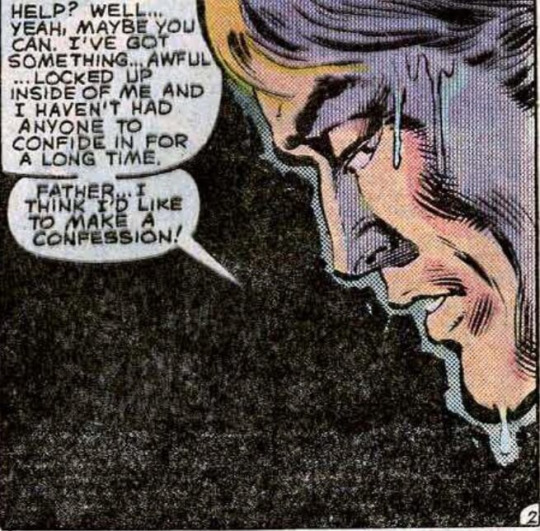
Throughout Stern's tenure, themes of redemption and the eternal struggle between good and evil permeated each issue. Johnny Blaze's internal conflict was brought to the forefront, as he grappled with the consequences of his Faustian bargain and sought to atone for his sins through acts of heroism. Stern's masterful storytelling, coupled with the dynamic artwork of Bob Budiansky, brought a sense of gravitas to each panel, immersing readers in a world where the boundaries between light and darkness blurred
The Ascension of Mephisto: J.M. DeMatteis' Magnum Opus
As Stern's run drew to a close, J.M. DeMatteis took up the mantle, guiding Ghost Rider through his final trials and tribulations. Issue 81, aptly titled 'The End of Ghost Rider,' served as a poignant conclusion to this chapter of Johnny Blaze's journey, offering closure while paving the way for future narratives. DeMatteis' writing brought a sense of depth and introspection to the series, delving into the psyche of both hero and villain alike
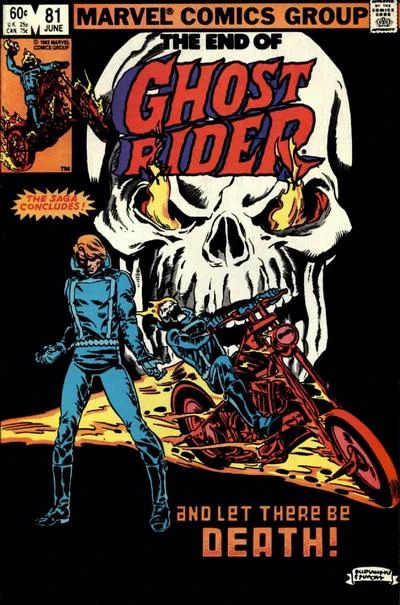
One of the most significant contributions of DeMatteis' tenure was the elevation of Mephisto from mere antagonist to Johnny Blaze's ultimate nemesis. Through intricate storytelling and nuanced characterization, Mephisto emerged as a formidable adversary, a dark mirror to Johnny's tortured soul. Theirs became a battle not only of strength but of willpower and resilience, with each confrontation pushing both characters to their limits
The Redemption of Zarathos: Unraveling the Demon's Past
Central to the Stern-DeMatteis era was the exploration of Zarathos, the demonic entity bound to Johnny Blaze's fate. As the series progressed, glimpses of Zarathos' tragic past emerged, shedding light on the origins of the Spirit of Vengeance and his eternal quest for redemption. Through intricate storytelling and subtle foreshadowing, Stern and DeMatteis wove a tapestry of intrigue and mystery, unraveling the layers of Zarathos' identity while deepening the connection between host and spirit
By delving into Zarathos' backstory, the series added depth and complexity to the character, transforming him from a mere instrument of vengeance into a figure of tragic heroism. His struggles became emblematic of the eternal battle between light and darkness, as he grappled with his own nature while striving to protect those he cared for. In the end, Zarathos' journey mirrored Johnny Blaze's own quest for redemption, forging a bond that transcended the confines of flesh and blood
A Legacy of Flame and Shadow
The Stern-DeMatteis era of Ghost Rider stands as a testament to the transformative power of storytelling within the realm of comics. Through meticulous characterization, intricate plotting, and dynamic artwork, the series breathed new life into the mythos of Ghost Rider, reshaping the character's identity for generations to come. From the retconning of Johnny Blaze's origin to the elevation of Mephisto as his arch-nemesis, each issue served as a building block in a narrative tapestry that explored the depths of human emotion and the eternal struggle between good and evil
As fans look back on this seminal era, they are reminded not only of the trials and tribulations of Johnny Blaze and Mephisto but also of the enduring legacy of Ghost Rider as a character. Through flame and shadow, redemption and damnation, the Spirit of Vengeance endures, a beacon of hope in a world consumed by darkness. And though the fires may wane and the shadows may lengthen, the spirit of Ghost Rider lives on, eternal and unyielding, a testament to the power of storytelling to transcend the boundaries of time and space
Buy Marvel Masterworks: Ghost Rider Vol. 6
#ghost rider#johnny blaze#roger stern#j. m. dematteis#bob budiansky#marvel comics#bronze age comics#jim shooter
22 notes
·
View notes
Text
When Spidey Jumped the Shark, Pt. 9: The David Michelinie Era
When Spidey Jumped the Shark, Pt. 9: The David Michelinie Era #SpiderMan #comics #Marvel
The David Michelinie Era of Amazing Spider-Man was a lengthy one. Continue reading When Spidey Jumped the Shark, Pt. 9: The David Michelinie Era
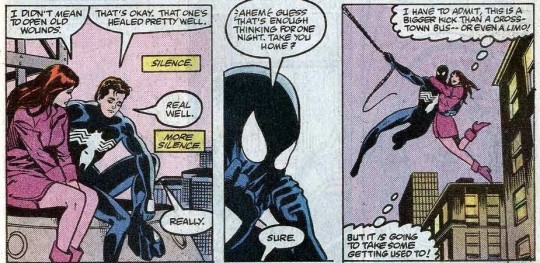
View On WordPress
#1980s#1990s#amazing spider-man#amazing spider-man annual 1987#amazing spider-man annual 21#ben reilly#bob mcleod#carnage#comics#dave michelinie#David Michelinie#eddie brock#Erik Larsen#fearful symmetry#gerry conway#green goblin#gwen stacy#harry osborn#J. M. DeMatteis#kraven&039;s last hunt#Mark Bagley#marvel comics#mary jane watson#maximum carnage#mike zeck#mj#Pete and MJ Wedding#peter david#peter parker#sal buscema
7 notes
·
View notes
Text
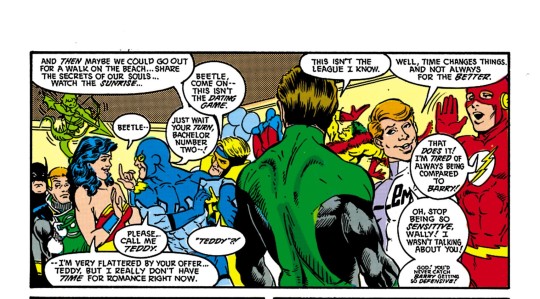
Justice League International #24: Across a Crowded Room.
by Keith Giffen/J.M.DeMatteis; Kevin Maguire ; Joe Rubinstein; Gene D'Angelo and Bob Lappan
" Please.. call me Teddy."
DC
#dc comics#justice league international#Keith Giffen#j. m. dematteis#Kevin Maguire#Joe Rubinstein#Gene D'Angelo#Bob Lappan
12 notes
·
View notes
Text
A fantastic sequence with the Sandman from J.M. DeMatties’ Shadow of the Green Goblin mini. Guy writes a great Peter and this is a great look at how Sandman’s not that bad a guy.

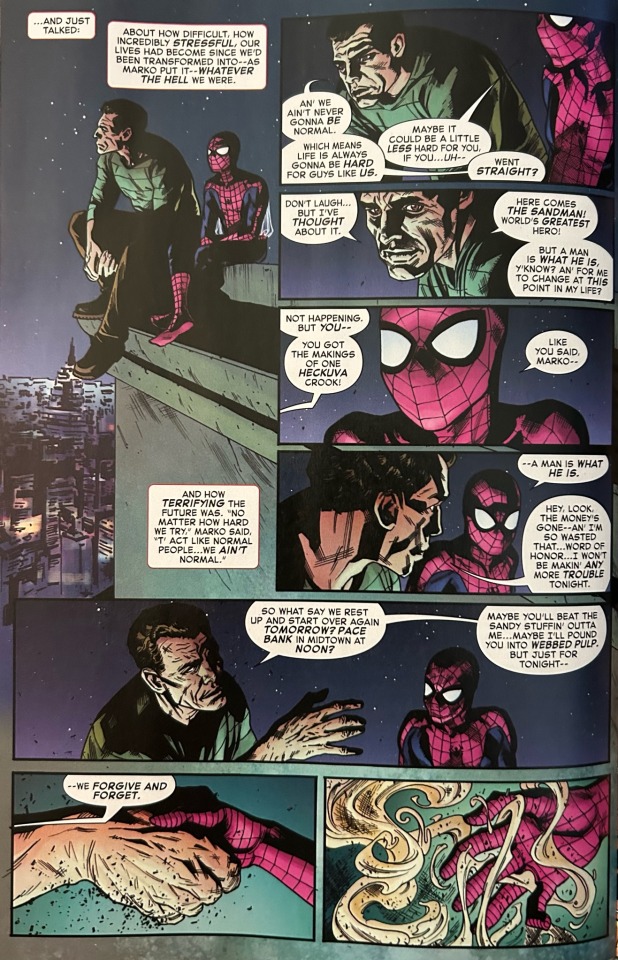
3 notes
·
View notes
Text
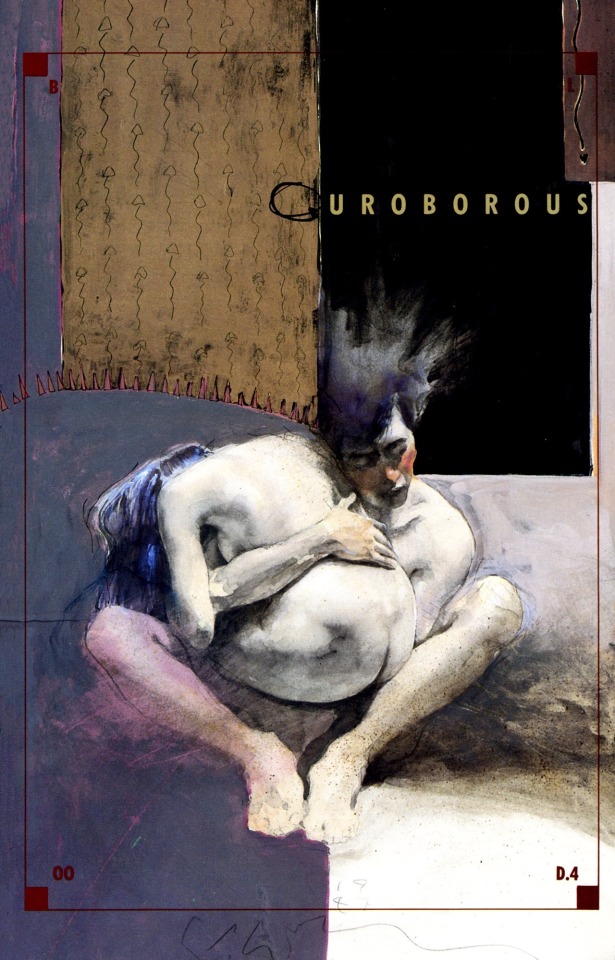
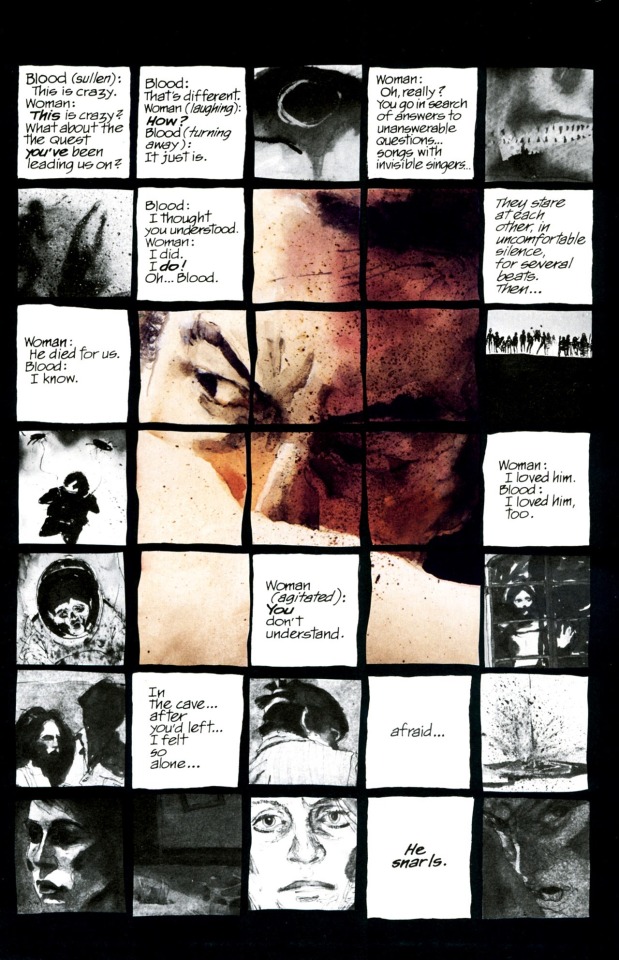


Selected pages from Blood: A Tale #4 (of 4) (Epic, 1987), with words by J. M. DeMatteis and pictures by Kent Williams.
20 notes
·
View notes
Text


"KRAVEN THE HUNTER HAS STALKED AND KILLED EVERY BEAST KNOWN TO MAN. BUT THERE IS ONE PREY THAT HAS ELUDED HIM."
PIC(S) INFO: Mega spotlight on various Marvel house ads for "Kraven's Last Hunt," the epic storyline written by J. M. DeMatteis, illustrated by Mike Zeck, and published by Marvel Comics in 1987. It is recognized today as a landmark evolutionary development in the so-called "Dark Age of Comics."
MINI-OVERVIEW: "The ultimate tale of revenge! Kraven the Hunter has stalked and killed every beast known to man. But there is one prey that has eluded him. One quarry that has mocked him at every turn: the Spider. Now, in one last hunt, Kraven will finally prove that he is Spider-Man's master - by burying him alive and taking his place! To destroy the spider, he must become the spider!"
-- MARVEL COMICS GROUP, c. late 1980s
STORY/SCRIPT: J. M. DeMatteis
ARTWORK: Mike Zeck
INKS: Bob McLeod
LETTERS: Rick Parker
COLORS: Bob Sharen, Mike Zeck, various
Source: https://forum.sanctuary.fr/t/page-s-de-pub/185608/225 (forum.sanctuary 2x).
#Kraven#Kraven the Hunter#Spider-Man#Kraven's Last Hunt#Marvel Universe#Dark Age of Comics#Marvel House Ads#House Ads#80s Marvel#J. M. DeMatteis#Marvel Comics#Kraven the Hunter 1987#Spidey Villains#Kraven's Last Hunt 1987#Web of Spider-Man#Amazing Spider-Man#The Spectacular Spider-Man#Marvel Villains#Print Ads#Marvel#Comics#Comic Books#Advertisements#The Amazing Spider-Man#Mike Zeck#1987#Supervillains#Hunter#Guns#Fearful Symmetry: Kraven's Last Hunt
1 note
·
View note
Text
Gnort

Justice League International #14 (1988) by J.M. DeMatteis, Steve Leialoha & Keith Giffen
#dc comics#Justice League International#Gnort#keith giffen#J. M. DeMatteis#Steve Leialoha#Al Gordon#Gene D'Angelo#Bob Lappan
16 notes
·
View notes
Text

Amazing Spider-Man: Soul of the Hunter (1992)
#amazing spider-man: soul of the hunter#artist: mike zeck#writer: j. m. dematteis#year: 1992#decade: 90s#kraven the hunter#sergei kravinoff
28 notes
·
View notes
Text


Plastic Man, the Justice League and the Spectre by Darryl Banks
#plastic man#justice league#aquaman#flash#wally west#wonder woman#j onn j onzz#green lantern#kyle rayner#superman#batman#the spectre#darryl banks#dc comics#modern age#j m dematteis
22 notes
·
View notes
Text
Captain America: Making of a War Hero into a Symbol of Hope

We all know that Captain America debuted in a title named after him by Joe Simon and Jack Kirby in 1941. He was seen punching Hitler right in the face but many may not know that this was done well before the US had decided to enter World War 2. In fact, at the time, the US was more concerned about its Pacific theater than the Atlantic. Nevertheless, Timely publishes the issue and Captain America gets established as a war hero from the start, who alongside his sidekick Bucky, is fighting fascism in continental Europe which is falling to the Reich like a house of cards
Cap at the time is the symbol of Freedom, anti-fascism, or as he would later be called the Sentinel of Liberty but there was one thing missing at Marvel. The House of Ideas lacked an inspiring figure like Superman among its flagship characters. The Fantastic Four, Spider-Man, The Incredible Hulk, The Invincible Iron Man, and even the Avengers had issues with themselves as well as with each other but a figure whom readers can look up to was something not present. Cap remained a 'man out of time' when he gets discovered by the Avengers but it takes a decade for writers to get him accustomed to the realities of America that were haunting the country from the streets to the Oval Office (Thank You, Jack Kirby and Steve Englehart)
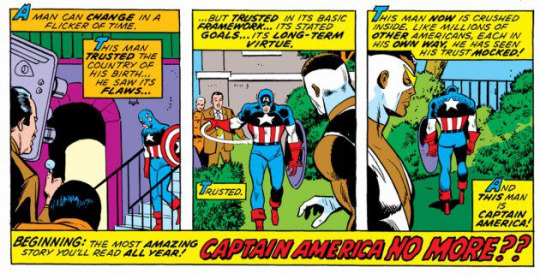
Well into the bronze age era of comics, and under Jim Shooter's reign of the bullpen, a young J.M. DeMatteis shows his potential for storytelling with his first assignment of Captain America no. 261 which would introduce Nomad to the readers for the first time. This issue was supposed to be a collaboration with the real-life Captain America TV movie starring Reb Brown but Jim had other ideas. Issues 261-263 would find Steve Rogers going to California to meet Galactic Films for the upcoming movie about him (in Earth-616) but his real mission was to investigate Nomad's activities on the streets of LA which would turn out to be a deep conspiracy by one of his oldest arch nemesis

After becoming a regular writer on the Captain America series, DeMatteis, Mick Zeck, and John Beatty wrote a story that was way ahead of its time. Today's resurgence of the far left in the world and in the US and the reactionary rise of the far right was being seen by comic book writers like DeMatteis way before many had thought of it. Surprisingly it was a feeble populist villain by the name of Everyman doing the talk, not the Red Skull

In the story, the disenfranchised youth who looked up to Everyman realize their mistake of choosing 'despair over hope' but what causes them to see this is the humility Cap showed despite being spit at multiple times (literally). His eagerness to listen to the young, to the future of the country and their grievances with America, the American Dream leads to a change of heart
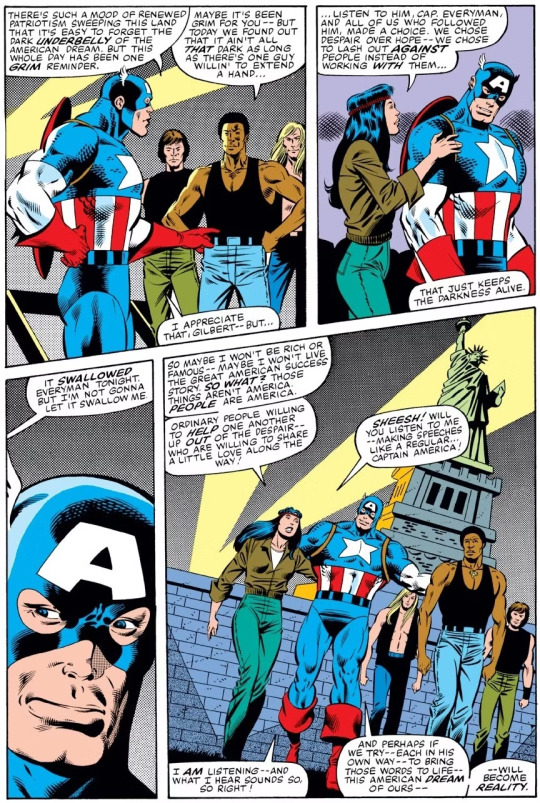
This single-issue story would showcase Cap in a different light. Steve Englehart had given Cap a rude awakening that patriotism can't come at the expense of truth and justice in Secret Empire. He showed Cap's disillusionment with the powers that be in America. DeMatteis took the opposite route to show Cap what's corrupting the country's future, and giving rise to the 'enemy within' who can cause anarchy. It wouldn't be wrong to say that Christopher Nolan's Bane (Dark Knight Rises) reminds us of Everyman but what's important to remember is that it was J.M. DeMatteis who warned us before anyone else did
This story is just the tip of the iceberg. The entire run by DeMatteis is one of the most underrated as it gets overshadowed by the works of Jack Kirby, Steve Englehart, and Mark Gruenwald. Like his works for Spider-Man and Doctor Strange, his work for Cap remains one of the best runs ever
22 notes
·
View notes
Text
Chapter 5 Snippet for The Ticket to Tomorrow
Our main villain appears!!!
———
“Interesting… What sort of energy could cause such a rare phenomenon?” Lord Manga actually turned around, his cape flowing regally. His hands grasped behind his back, and the green glow sparkled behind his visor.
“Fascinating, it appears to be a mixture of 5th-dimensional energy as well as well… another unknown higher dimensional energy not unlike your very own essence. Truly remarkable. M’lord, a combination of energies such as these, if able to be harnessed, would last us decades.., no! Centuries or more!” The robot servant’s mechanical fingers twitched oddly, relaying his excitement.
“WONDERFUL!!” Lord Manga cried in his delight.
“M’lord. You are shouting again…” L-Ron winced, taking a step back.
“Ah-hmm-hem. Yes, very good L-Ron. J-Edgar deserves a reward for such a discovery. Submit a body upgrade for the minion—“ His voice turned more amused as he added, “I’ve heard the summer models are quite fashionable.”
“Right away, Lord Manga,” L-Ron replied, tapping at his holo-display. “I shall also send hyperjump orders to navigation for space sector 0598, if it pleases you, M’Lord.”
“It does! Let us be on our way,” Lord Manga agreed. He strode out of the observation room towards the mothership dome and the command bridge. His cloak billowing with his authoritative stride.
L-Ron bowed as his master passed and waddled along behind.
“Oh, and contact the Czarnian. I believe we’ll require his services again,” the green glow in Manga’s eyes flared as he looked over his shoulder.
L-Ron would’ve grinned if he had a mouth.
“Certainly, M’Lord.”
The airlock doors closed with a definitive hiss and click.
———
@kitsoa cause I need more Tumblr friends 😖
However Many Sentences Sunday:
Here is another excerpt from “Three Part Round” my follow up to “Double Headed”
“I put the guitar in your room,” she informs her daughter as she sits down at the table.
“Thanks.” Duela’s wearing a black and gold Gotham Rogues sweatshirt liberated from the dusty corner of Rachel’s closet. Harvey’s interest in non-baseball sports could only be measured in nanometers, so it’s probably a gift from some office Christmas party.
I’ll tag:
@radioactivepeasant @thoughtfulraven @nitewrighter and anyone else who wants to join in!
#wip#my adventures with superman#snippet#fanfiction#fanfic#dc comics#lord manga khan#justice league#crossover#chapter 5#the cluster#keith giffen#J. M. DeMatteis#the ticket to tomorrow
31 notes
·
View notes
Text
When Spidey Jumped the Shark, Pt. 7: The Roger Stern Era
An analysis of the #RogerStern Era of #SpiderMan. #WhenSpideyJumpedTheShark
The Roger Stern Era of Amazing Spider-Man had a nice little rehearsal space of sorts in the pages of Peter Parker, the Spectacular Spider-Man, as touched on last time. Continue reading When Spidey Jumped the Shark, Pt. 7: The Roger Stern Era
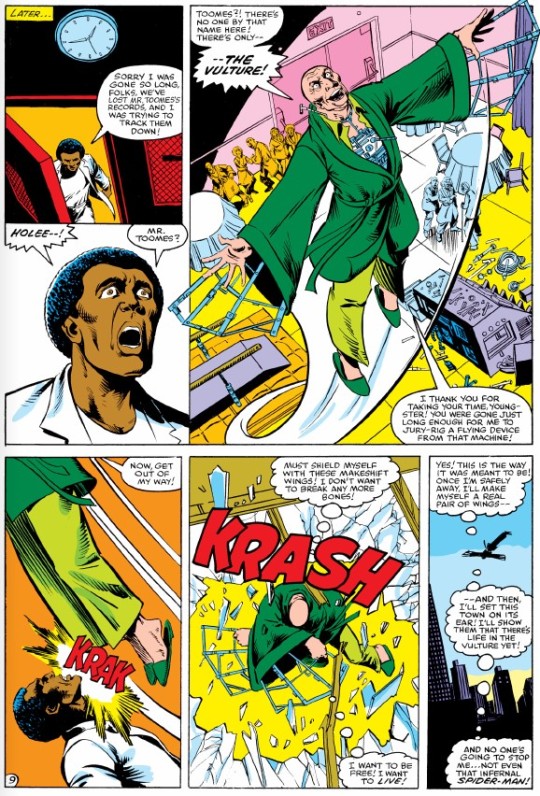
View On WordPress
#"with this gun"#1980s#amazing spider-man#bronze age#comics#gwen stacy#harry osborn#hobgoblin#J. M. DeMatteis#john romita#john romita jr.#John Romita Sr.#juggernaut#kerry gammill#Liz Osborn#marvel comics#marvel tales#marvel team-up#mary jane#mary jane watson#mj#Roger Stern#spectacular spider-man#spider-man#Superheroes#vulture#web-slinger#webhead#“The Kid Who Collects Spider-Man”
2 notes
·
View notes